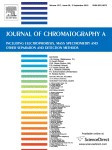Durila M, Kalincik T, Cvachovec K, Filho R. Anaesthesia. 2010 Aug;65(8):864–5. IF: 2.855

Abstract:
Thromboelastography (TEG) is used in the diagnosis and management of coagulation disorders in a number of clinical specialties, including intensive care medicine. Heparin used to prevent obstruction of blood-sampling catheters with blood clots may interfere with the results of TEG [1-3], and the use of heparinase-coated cuvettes has been recommended to reverse this effect. When performing TEG in patients with severe sepsis, we noticed that some blood samples pre-treated with heparinase showed decreasing clot amplitude resembling a fibrinolytic pattern. This could have been due to true fibrinolysis or to disconnection of the undissolved clot from the pin or the cuvette during platelet-mediated clot retraction. We felt that true fibrinolysis was unlikely, as none of our patients with a fibrinolytic TEG pattern had bleeding problems clinically or were receiving anticoagulant therapy. Moreover, inspection of the clot did not reveal signs of fibrinolysis and we detected visible disconnection of the clot from the pin or the cuvette. We performed TEG analysis (Haemoscope Corp., Niles, Illinois, USA) of a blood sample obtained from a healthy volunteer and added 5000 IU streptase (CSL Behring GmbH, Hattersheim am Main, Germany) into the cuvette to trigger artificial fibrinolysis. The resulting fibrinolytic pattern resembled that recorded in some of our heparinase-treated samples, and upon inspection no blood clot was found in the cuvette. We conclude that TEG in blood samples pre-treated with heparinase can result in false positive fibrinolytic patterns. We recommend careful interpretation of such samples in the context of the patients' clinical condition or the elimination of the requirement for heparinase by not using heparin in the catheter flush system or discarding the first aspirated volume to eliminate the added heparin.